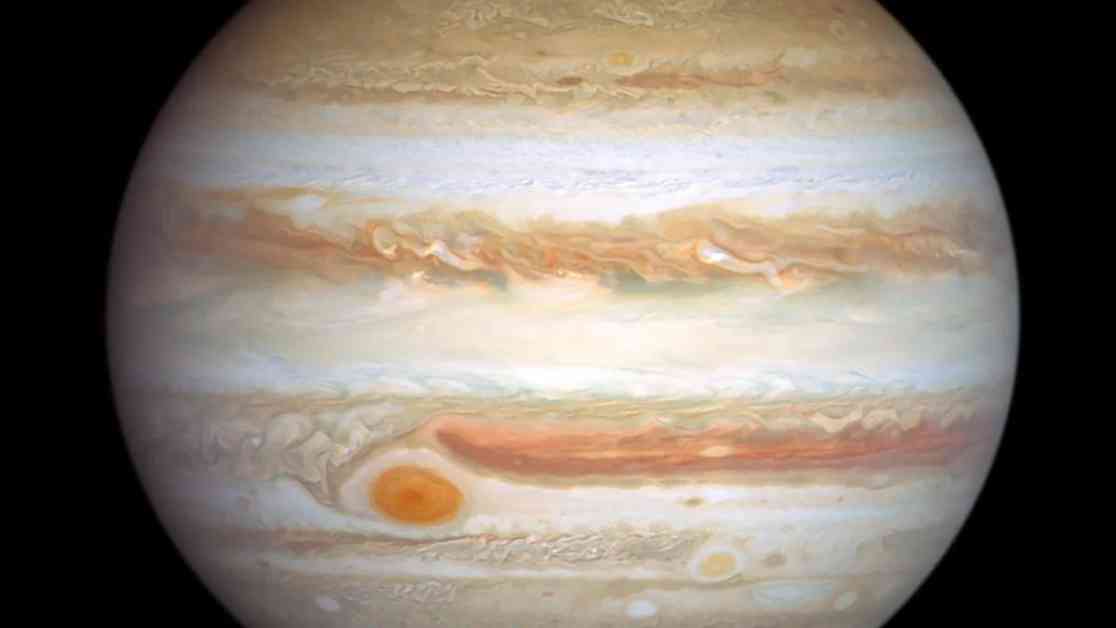The Hubble Space Telescope has been observing Jupiter’s Great Red Spot (GRS) and has discovered some surprising behavior. The GRS, a massive anticyclone on Jupiter, has been shrinking over the years and currently measures about 9,165 miles across. However, recent observations show that the GRS is oscillating, expanding and shrinking every 90 days.
A team of astronomers led by Amy Simon from NASA’s Goddard Space Flight Center used the Hubble telescope to study the GRS for 88.5 days. They found that the GRS periodically expands and shrinks along its semi-major axis. This unexpected behavior has puzzled scientists, as there are currently no hydrodynamic explanations for it.
The GRS is located 22 degrees south of Jupiter’s equator and is surrounded by powerful jet streams that prevent it from moving into other latitudes. These jet streams cause the GRS to drift westward, with its motion accelerating and decelerating over a 90-day cycle. The squeezing of the GRS’ shape seems to be connected to this oscillation in its drift.
Mike Wong from the University of California, Berkeley compares the squeezing of the GRS to a sandwich with too much filling in the middle. When the GRS drifts at a slower rate, it expands and shines brighter in ultraviolet light. On the other hand, when the drift accelerates, the GRS contracts in size. This interaction with the surrounding atmosphere may be causing the changes in the GRS’ shape.
Only one oscillatory period has been observed so far, but astronomers are planning to study the GRS further with the James Webb Space Telescope. By probing deeper into the storm, they hope to understand if wind velocities within the GRS are also changing with the oscillations.
The discovery of the GRS’ oscillatory behavior was reported in a paper published in The Planetary Science Journal. Scientists are eager to gather more data to understand the changes happening to this iconic feature on Jupiter. As the GRS continues to shrink and oscillate, the future of this giant storm remains uncertain.










